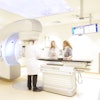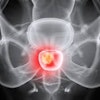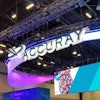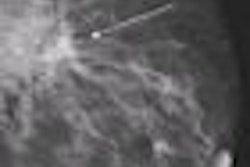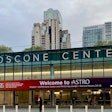Children diagnosed with a certain type of lymphoma have a significantly higher complete response rate to initial radiation therapy compared to initial chemotherapy, according to radiation oncologists from the Cancer Hospital of the Chinese Academy of Medical Sciences in Beijing.
This discovery was reported in the largest study of its kind examining outcomes of patients with extranodal nasal-type natural killer/T-cell lymphoma who were treated at the hospital over a 20-year period. The study was published in the November 26 issue of Blood (2009, Vol. 114:23, pp. 4771-4776).
Natural killer/T-cell lymphoma (NKTCL) is a rare and heterogeneous form of non-Hodgkin's lymphoma. The disease is more prevalent in Asia, representing 22.4% of all lymphoma subtypes, compared to Europe (4.3%) and North America (5.1%), according to statistics from the International T-Cell Lymphoma Project.
The research team retrospectively analyzed the medical records of all patients younger than 21 years who were treated at the Cancer Hospital and/or the Peking Union Medical College in Beijing between January 1988 and June 2008 to characterize the features, prognoses, and outcomes of NKTCL.
The study included 37 patients who presented with early-stage disease, high frequency of B symptoms, good performance, and chemoresistance. Their most common clinical symptoms were nasal obstruction, odynophagia, dysphagia, and cervical lymphadenopathy, according to principal investigator Dr. Yexiong Li, professor and chairman of the department of radiation oncology.
The majority of patients were male (64.9%); 21 patients were diagnosed at age 15 to 18 years, eight patients at 7 to 14 years, and eight patients at 19 to 21 years.
The 33 patients with stage I (51.4%) and stage II (37.8%) disease received only radiation therapy (nine patients) or radiation therapy with chemotherapy (10 patients). Fourteen patients in this subgroup received one to four cycles of chemotherapy before and after radiation therapy, the same treatment that patients with stage III and IV disease received.
The majority of patients received a radiation dose of 50-56 Gy or 50 Gy with a boost of 10-11 Gy to residual lesions. Ten patients received a radiation dose of less than 50 Gy.
In all, 32 (86%) of the patients had a complete response, which the authors defined as complete disappearance of all detectable clinical and radiographic evidence of disease. One patient had a partial response, and four patients experienced disease progression.
The average five-year overall survival rate of the 32 patients was 84.8%. Patients with stage I and II disease had a five-year survival rate of 77.6% and a progression-free survival rate of 72.3%.
The control rate after initial radiation therapy was 73.7%, compared with a control rate of 16.7% following initial chemotherapy. These results signified resistance to chemotherapy and sensitivity to radiation therapy, according to the authors. At a median follow-up time of 42 months, none of the patients had acute late toxicities or second malignancies.
Related Reading
MRI shows potential for staging pediatric non-Hodgkins lymphoma, January 2, 2003
Copyright © 2009 AuntMinnie.com

